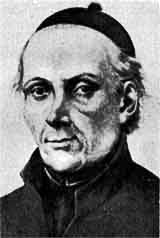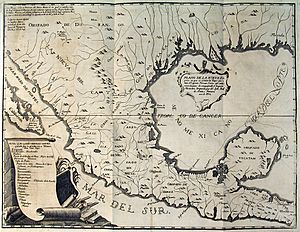José Antonio de Alzate y Ramírez facts for kids
José Antonio de Alzate y Ramírez (born November 20, 1737 – died February 2, 1799) was an amazing person from New Spain (which is now Mexico). He was a priest, but also a brilliant scientist, historian, mapmaker (cartographer), and writer for newspapers. He loved learning and sharing knowledge with others.
Contents
Early Life and Education
José Antonio de Alzate y Ramírez was born in Ozumba, a town in Mexico, in 1737. His parents were Felipe de Alzate and María Josefa Ramírez. Interestingly, he was a descendant of the famous writer Juana Inés de la Cruz.
He went to school at the Colegio de San Ildefonso in Mexico City. In 1756, when he was 19, he earned a degree in theology. By the time he was 20, he became a priest.
A Passion for Science
Even though he was a priest, Alzate had a huge passion for science. He was very interested in:
- Natural sciences (like biology and geology)
- Physics
- Astronomy (studying stars and planets)
- Mathematics
He did many scientific experiments and wrote lots of articles. These articles were published in important science journals of his time. He was even a member of the French and Spanish science academies!
Studying Nature and Weather
Alzate was known for being a great zoologist (someone who studies animals) and botanist (someone who studies plants). His work helped people learn more about Mexico's ancient history and its natural world.
He was also one of the first reliable people to observe and record the meteorology (weather patterns) in Mexico. He wrote about the weather in his "Observaciones meteorológicas" in 1769.
A Pioneer in Publishing
José Antonio de Alzate y Ramírez was also a very important journalist and publisher. He wanted to share new ideas and scientific discoveries with more people.
Literary Newspapers
In 1768, he started his first newspaper called Diario literario de Méjico (Literary Newspaper of Mexico). Unfortunately, it only lasted for three months.
But he didn't give up! In 1788, he started another newspaper called Gaceta de Literatura (Newspaper of Literature). This one was very successful and was published until 1795, with 115 issues! This newspaper inspired many other people in Mexico to start their own publications.
Important Writings
Alzate wrote more than thirty different papers on many topics. Some of his notable works include:
- Observación del paso de Venus por el disco del Sol (1770) – This was about observing the planet Venus as it passed in front of the Sun.
- Modelo y descripción de los hornos de Almadén – This described the furnaces used in mining.
- Notes and maps for the Historia Antigua de México (Ancient History of Mexico) by Francisco Javier Clavijero.
- A Mapa de la América del Norte (Map of North America).
He also wrote the first published description of the ancient ruins of Xochicalco, which was a very important discovery.
Other Interests and Recognition
Alzate was interested in many practical things too. He wrote several papers about growing silk in Mexico. He also wrote about using ammonia to fight bad gases in old mines. He even created detailed maps of New Spain (Mexico).
Sometimes, people in his own country didn't agree with him or even criticized him. But he was highly respected by others. The French Academy of Sciences made him a special member. The viceroys (leaders) of Mexico and the archbishops often asked him to help with scientific projects.
He was also a member of the Royal Botanical Garden of Madrid. José Antonio de Alzate y Ramírez passed away in Mexico City in 1799.
Legacy
José Antonio de Alzate y Ramírez left a lasting impact.
- In 1884, a group called the Antonio Alzate Scientific Society was created in his honor.
- In 1935, this society became the National Academy of Sciences, which is a very important scientific organization in Mexico.
- A dam and a reservoir in the State of Mexico, near Toluca, are named after him.
- A type of plant, the genus Alzatea, is also named in his honor.
See also
- List of Roman Catholic scientist-clerics
- Spanish American Enlightenment
 In Spanish: José Antonio Alzate para niños
In Spanish: José Antonio Alzate para niños



